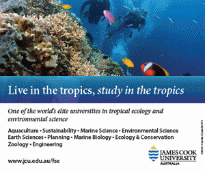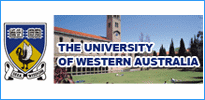Switzerland: Switzerland Education Profile 2012
2012/04/04
Switzerland Education Profile 2012
Vocational education is the most widespread post-compulsory educational path in Switzerland. After finishing their compulsory education, around two thirds of young people choose a vocational education programme (a third opt for a general education school). In the first half of the 1990s, there were signs of a trend away from vocational education in favour of general education schools. But this trend now appears to have been driven by the economic cycle: the recession resulted in a marked contraction in the number of available apprenticeship positions.
In the second half of the 1990s, the number of student enrolments in general education schools stagnated but grew rapidly in vocational education..Since 2002, the number of vocational education enrolments has declined once again, while enrolments in general education have risen.
Education and scienceSwitzerland's Educational Landscape
Switzerland's education system is characterised by strong federalism.
The various cantons' education systems are considerably different from one another in certain respects. They are introduced in "Switzerland's Educational Landscape". The application available in german and french is based on UNESCO's ISCED-97 classification (International Standard Classification of Education) and provides information on each canton's number of students in the various school levels, education and training fields and school types.
The "2010-2019 Education System Scenarios" is the 9th edition of a series that was launched in 2002 with specific forecasts on the future of all Swiss universities. These papers provide forecasts up to 2019 covering school students, university students, degrees awarded and teaching staff in the largest segment of the Swiss education system. The results are often provided with a high degree of detail.
This year, for the first time, results broken down by region are being published for universities of teacher education and for compulsory school teachers. Some improvements to the forecasting model have also been made.
This work by the Federal Statistical Office aims to reliably anticipate the main future developments based on a transparent methodology and to thereby provide a solid basis for decision making and planning.
The principal change factors are often demography, trends affecting school and tertiary-level education attendance and transitions between different levels of education, as well as the economic situation. Apart from taking account of the impact of the HarmoS Concordat on the number of pre-school and compulsory school children, no hypothesis is made regarding possible changes in education policy.
In most of the forecast papers, two scenarios are selected. The first scenario is of the "status quo" type. It usually assumes a lack of change or minimal changes in the principal factors. The second is a "trend" type scenario which mainly extends observed trends for the principal factors.
Lastly, the general hypotheses of the 2010-2019 scenarios are often very similar to those used in the 2009-2018 scenarios.
Principal results
The principal results of the 2010-2019 scenarios are the following:
Compulsory education
* Upturn in the number of primary school students as of 2014 (german, french)
* Significant increase in the number of retirements among teachers in primary and lower secondary level schools (german, french)
Higher secondary level
* 2009-2019: a decade of declining numbers (german, french)
Universities
* Number of students in Swiss universities will rise by 8000 to 10,000 in the autumn of 2010 (german, french)
* +15 to +26% more professors in Swiss institutions of higher education by 2019 (german, french)
Educational level of the population of Switzerland
* Large future increase in the educational level of the population of Switzerland
In every instance, marked regional or cantonal differences are observable in the trends. Detailed results are made available.
Revisions
The main revisions with respect to the 2009-2018 scenarios are the following:
Pre-school and compulsory school students
Due to the continuous increase in the number of births and the hypothesis that this increase will continue, which was made during the 2010 updating of the 2005-2050 population change reference scenario, the figures in the scenarios are revised upward as of 2014 for the pre-school level and as of 2017 for the primary-school level. But the short-term revisions are minor.
Compulsory school teachers
The significant increase in the number of teachers going into retirement which was forecast in the 2009-2018 scenario has been largely confirmed. The number of teaching staff departures, both total departures and departures due to retirement, was revised slightly as a result of improvements to the determination of staff turnover rate.
Upper secondary level students
The results of the 2009-2018 scenarios have been largely confirmed. The methodological changes to the treatment of entry to the upper secondary level results in an upward revision of about 2% to the number of entrants to vocational training.
University students and graduates
The results of the 2009-2018 scenarios have been largely confirmed. In the case of the universities of applied sciences, the continued significant rise in the number of students making the transition from a professional baccalaureate to the universities of applied sciences, coupled with other factors, result in an upward revision of the forecasts of +4,500 students over the long term for the Bachelor's and Master's degree programmes.
As regards Swiss institutions of higher education, in view of the better available information about the academic programmes and enrolments in the Bologna system, there is also an upward revision of the forecasts (upward revision of +3,300 students over the long term for the Bachelor's and Master's degree programmes).
Educational level of the population of Switzerland
If the new scenarios (2010-2060) are compared with those of 2009-2018, the results of the "medium" scenario are only marginally different (deviation of less than 0.7% until 2018 of the proportion of tertiary education graduates in the total population aged 25 to 64). For the population of foreign nationality, the deviation is slightly greater due to the fact that we lowered the transition rate to tertiary education (proportion of tertiary education graduates reduced by 2% by the year 2018).
Changes in method or level of detail of calculations
Compulsory school students
No change
Compulsory school teachers
Two significant improvements were made: Starting this year, the work is carried out in the four regions of the Swiss Conference of Cantonal Ministers of Education (EDK); the method for determining the teaching staff turnover rate in terms of volume of activity has been changed slightly and the baseline level calculations, which were limited to the years 2006-2007 in the 2009-2018 scenarios, have been extended to the 2003-2008 period.
Upper secondary level students
An adequate predictive modelling of the transition between the lower secondary level and the upper secondary level requires taking due account both of cross-cutting aspects, which can be influenced by the economic situation, and longitudinal aspects, connected with sometimes significant gaps between the time when students leave compulsory school and enter (or re-enter) the upper secondary level.
The way this transition is dealt with has been improved this year to take better account of the two aspects. The consequence of this is to reduce the short-term impact of the trend reversal in the number of compulsory school leavers on the number of entrants to vocational training
University students and graduates
The following improvements to the forecasting model have been made this year: developed specific forecasts for universities of teacher education in order to be able, for example, to furnish results broken down by Swiss Conference of Cantonal Directors of Education region of the future number of holders of a pre-school or primary school teacher Bachelor's degree; improved the treatment of "complex" school careers in the universities thanks to a better understanding of the impact of the Bologna reform. One of the aims was to improve the way the model treats Bachelor's degree students who take up their studies again after an interruption and to take more precise account of students who change from one type of university to another after they have completed their Bachelor's degree. The first effect results in a lower estimate of the average time spent on a Bachelor's degree, while the second one results in a larger number of Master's students.
- Switzerland News
-
- AFGHANISTAN: UNWTO: International tourism – strongest half-year results since 2010
- ALBANIA: US LNG exports make European market more competitive
- SWITZERLAND: Swiss M3 Money Supply Growth Steady At 4%
- SWITZERLAND: The Swiss Stock Market Climbed Despite Weakness Among Financial Stocks
- ARMENIA: Crimea: Circumventing Trade Sanctions Via Novorossiysk
- SWITZERLAND: Switzerland Prepares For Wave Of Immigrants
- Trending Articles
-
- CHINA: China welcomes Guinea to take part in Belt and Road Initiative
- CAMEROON: Poor End of Year Results for Cameroon Students
- JAPAN: How Honda lost its mojo - and the mission to get it back
- UNITED STATES: Spotify, Hulu target students with discounted bundle
- UGANDA: Ugandan Govt Starts Verifying International Academy Teachers
- AUSTRALIA: Queensland Bauxite Gains State Approval of Mineral Development Work Program













